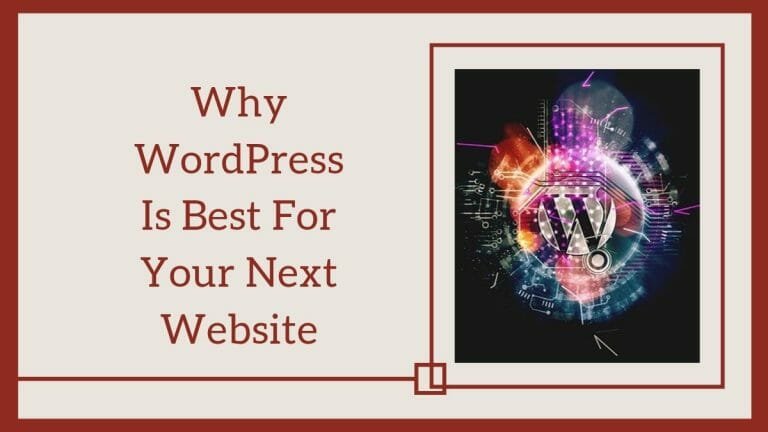Effective Public Relations (PR) strategies have become crucial tools for e-commerce brands looking to make a lasting impression and drive growth.From building brand credibility to forging meaningful connections with customers, PR offers many opportunities for an eCommerce company to thrive in an increasingly digital world. Therefore, you can’t just ignore PR for eCommerce.
Are you looking to join a multitude of brands that embrace PR for eCommerce? Well, you’re in the right place.
In this article, we’ll delve into four powerful ways to harness the power of PR to elevate your eCommerce business and achieve your goals.
Table of Contents
Toggle1. Partner with influencers
Influencer marketing has revolutionized the way brands engage with their target audience since they tap into an already established follower base. This drives conversions in a way that traditional advertising simply can’t match.
However, your eCommerce business won’t just benefit from any influencer partnerships. The key to successful influencer partnerships lies in finding the right fit for your brand. So rather than solely focusing on influencers with the largest reach, consider factors such as relevance, authenticity, and engagement.
Also, work with influencers whose values and aesthetic align with your brand identity. This will help ensure that any sponsored content feels genuine and resonates with their audience.
Once you’ve identified potential collaborators, establish clear objectives and expectations for the partnership. Communicating your goals upfront will help ensure a successful collaboration.
When it comes to executing the partnership, give influencers creative freedom to showcase your products or services in a way that feels authentic to their personal brand. Whether it’s through unboxing videos or product reviews.
You can further support them by offering exclusive discounts or promotions for their followers to incentivize engagement and drive traffic to your eCommerce store.
2. Boost credibility through valuable insights
Credibility is key for any eCommerce business striving to thrive in a competitive marketplace because it’s the gateway to winning your target audience’s trust.
One of the key ways to achieve this is by positioning your brand as a thought leader within your industry. You can achieve this by offering valuable insights, expertise, and unique perspectives on relevant topics.
To begin, identify key areas of expertise or industry trends that your brand can comfortably provide valuable insights on. Next, explore various channels and platforms for sharing your insights with a wider audience. Some of the channels include guest blogs on industry-leading websites or participating in panel discussions and webinars within your niche.
In addition to external channels, leverage your own digital platforms, such as your website, blog posts, and social media platforms, to share valuable insights with your audience. You can also consider partnering with industry influencers, experts, or reputable organizations to co-create valuable content or collaborate on research projects.
Getting the thought leader title is clearly not an easy process, but you don’t have to work on all this on your own. You can hire a niche PR agency. For instance, if you’re in the liquor business you can work with an alcohol PR agency.
3. Study consumer triggers
Consumer triggers refer to the underlying emotional, psychological, and social factors that influence purchasing decisions and drive consumer behavior. By studying these triggers, you can tailor your PR campaigns to evoke specific emotions, address consumer needs, and ultimately drive engagement and sales.
To begin, conduct thorough market research to gain insights into the demographics, preferences, and purchasing behavior of your potential customer base. Next, use data analytics to identify the key consumer triggers.
These triggers can vary depending on factors such as product category, industry trends, and cultural influences. However, some common consumer triggers include fear of missing out (FOMO), social proof, scarcity, exclusivity, and the desire for self-improvement or status.
Once you’ve identified relevant consumer triggers, incorporate them into your PR campaigns strategically and authentically.
For example, if scarcity is a key trigger for your audience, you could create limited-time offers or exclusive promotions to create a sense of urgency and drive sales. If it is social proof, leverage customer testimonials, user-generated content, and influencer endorsements to showcase your products or services’ popularity and credibility.
4. Build a brand
Building a strong and recognizable brand is essential for any business’s long-term success. Your brand is not just your logo or product; it’s the emotional connection you forge with your audience, your values, and even how you handle client communication.
Effective PR strategies play an active role in shaping and communicating your brand identity.
To begin, define your brand identity by clarifying your mission, values, and unique selling proposition (USP). Ideally, what sets your eCommerce business apart from others in the industry? By articulating a clear brand identity, you can guide your public relations efforts and ensure consistency across all touchpoints.
Next, develop a cohesive brand narrative that tells your story and communicates your brand’s values and personality. Your brand narrative should be authentic and relatable to resonate with your prospective customers on an emotional level. Then weave your brand story into your PR campaigns.
Consider leveraging tactics such as media relations, influencer partnerships, and content marketing to amplify your brand’s reach and visibility.
Finally, ensure you continuously monitor and evaluate your brand’s performance and public perception. You can ask for customer feedback or track brand sentiment and social platform mentions. Also, analyze key metrics such as brand awareness, loyalty, and advocacy. Then use this data to refine your PR strategies.
PR strategies used by eCommerce brands (Examples)
Now let’s look at some real-life examples of PR strategies used by eCommerce brands.
Amazon
Amazon has a solid brand identity as one of the world’s largest eCommerce platforms. So as you can imagine, Amazon uses a multifaceted PR approach to maintain its market leadership position.
One of Amazon’s key PR strategies is leveraging media coverage to promote its products, services, and innovations. From press releases announcing new features and partnerships to media interviews with company executives, Amazon strategically utilizes media relations to generate buzz and maintain a positive image.
For instance, they have an official YouTube channel (Inside Amazon) that shares employees’ experiences in the company and even information on key projects. Check out their YouTube miniseries on Project Kuiper.

Additionally, Amazon frequently partners with celebrities and influencers to endorse its products, further extending its reach and credibility with consumers.

The influencers can package their content in different ways from unboxing videos to product reviews. Additionally, they often get discount codes that they can share with their audience, which boosts engagement.
Warby Parker
Warby Parker, an online eyewear retailer, has built a strong brand presence through innovative PR initiatives that emphasize storytelling and community engagement.
One notable example is Warby Parker’s “Buy a Pair, Give a Pair” program, which garnered widespread media attention and positioned the brand as socially conscious and philanthropic. The campaign has distributed over 15 million pairs of glasses since it started in 2010.

By combining compelling storytelling with a commitment to social responsibility, Warby Parker has differentiated itself in a crowded marketplace and cultivated a loyal customer following.
Sephora
Sephora, a leading beauty retailer, employs a variety of PR strategies to maintain its status as a trendsetter in the beauty industry. One of Sephora’s most successful PR initiatives is its collaboration with beauty influencers and content creators.

Through strategic partnerships with influencers such as beauty vloggers and makeup artists, Sephora showcases its products in authentic and engaging ways. This drives brand awareness and visibility, which influences purchasing decisions among its target audience.
Additionally, Sephora frequently hosts experiential marketing events and pop-up shops to create immersive brand experiences and foster community engagement.
ASOS
ASOS, a global online fashion retailer, is known for its innovative PR campaigns that resonate with its young, fashion-forward audience. One notable example is ASOS’s use of user-generated content (UGC) to showcase its products in real-life settings.
The brand encourages customers to share photos of themselves wearing ASOS clothing on social media using specific hashtags. By doing so, ASOS creates a sense of community and authenticity while also leveraging UGC as valuable social proof to drive sales.
A great example of such a hashtag is #asseenonme, which was a campaign launched in 2014. However, despite initially starting a campaign it is still being used today by ASOS customers in their social posts.

Additionally, ASOS frequently partners with fashion influencers and celebrities to create exclusive capsule collections or generate buzz around new product launches.

These real-life examples highlight the diverse range of PR strategies that you, as an eCommerce brand can use to drive brand awareness, engagement, and ultimately, sales.
Conclusion
Leveraging Public Relations (PR) strategies in today’s eCommerce landscape is imperative for sustained growth and success.
We have comprehensively discussed four key ways you can use PR for eCommerce today. They include partnering with influencers, boosting credibility through valuable insights, studying consumer triggers, and building a solid brand
However, keep in mind the eCommerce landscape is constantly evolving. Therefore, you must stay responsive to changing consumer trends and market dynamics, adapt, and be innovative to achieve long-term success.
By Chris Norton, host of the UK’s 7th largest marketing podcast, which celebrates marketing mistakes, Socially Unacceptable, and Founder of award-winning B2C specialist PR agency Prohibition. His social media training blog is listed in the UK’s top 10 PR blogs. For tons of digital PR tips, you can follow Chris here @chris_norton.

Interesting Reads:
5 Best Variation Swatches Plugins for WooCommerce in 2024
WP Event Manager Review: An All-in-one WordPress Event Management Plugin
Visual SEO: Optimizing Images and Videos for Search





